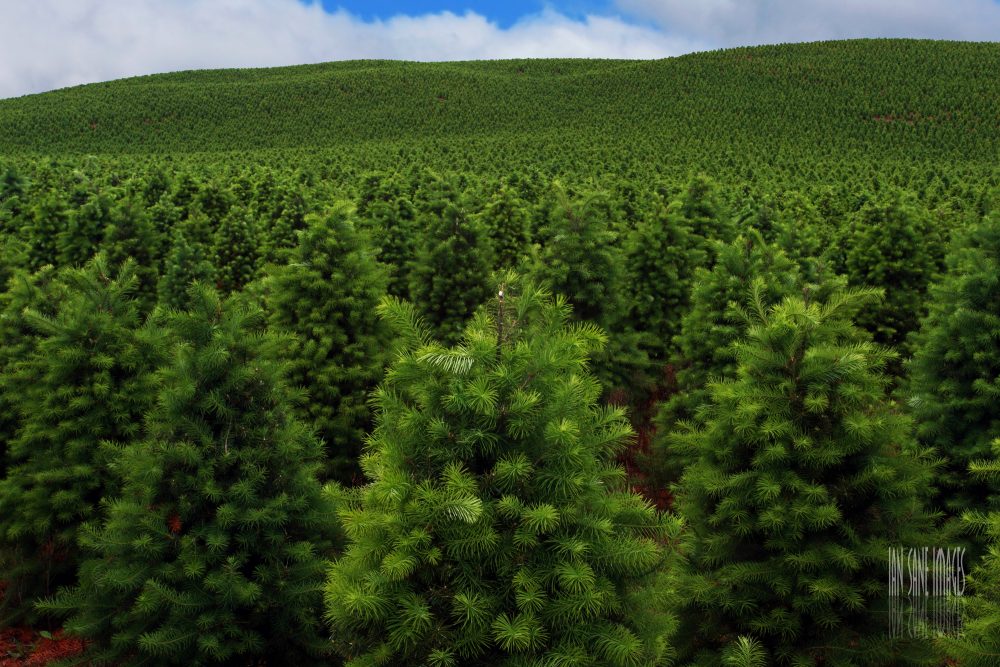A Christmas Tree Grows In Oregon
The country’s Christmas tree capital is Oregon, where Douglas and noble firs reign thanks to accommodating climate and soil.

A Christmas tree farm full of Douglas firs, located in Sublimity, Oregon (taken in June 2011). Photo by Ian Sane Images/flickr/CC BY 2.0
If you’ve got a live Christmas tree, there’s a pretty good chance it came from Oregon. Ever since 1978, Oregon has been the tree-producing capital of the U.S., according to Michael Bondi, a regional administrator for the Oregon State University agricultural extension service. The state corners a quarter of all production, harvesting around 7 million trees each year, according to the National Agricultural Statistics Service. Most trees travel south to California, Bondi says, but Oregon species can be found all over the country and along the Pacific Rim, from Mexico to Vietnam.
Douglas and noble firs—species of evergreen native to the Pacific Northwest—dominate the crop. These types of trees grow well in the state’s mild, moist, climate, leading to a quality Christmas tree at harvest time. “We don’t get a lot of really cold, cold or hot, hot weather,” says Bondi. The trees in the picture above, taken in 2011 by Ian Sane Images, are Douglas firs managed by Silver Mountain Christmas Trees (the company has harvested several thousand trees from the field over the past six-eight weeks, however, so it looks much different now, according to office manager, Jody L. Raska).
As important as the climate around the trees is the dirt beneath them. Weathering of ancient basalt from the Columbia River Basin produces a deep, rich, soil known as Jory soil. Dig into the ground and you’ll find pungent and sticky granules shaped “like grape nuts,” says Cory Owens, a soil scientist with the Natural Resources Conservation Service in Oregon who works in Willamette Valley. You can break apart the clumps with your hands, she says, but it’ll stain them red with the rusted iron oxides found in volcanic rock.
This earth soaks up plenty of water from the infamous drizzle that persists most of the year, but it drains well, avoiding boggy conditions. While the majority of Oregon Christmas trees grows in Jory soil, vineyards thrive there too, says Thor Thorson, a soil scientist for the Natural Resources Conservation Service in Oregon. The soil’s so important that in 2011, the state legislature voted to make it Oregon’s official state soil.
Even with the suitability of Oregon’s climate and soil, however, “it takes a lot of faith to be a Christmas tree farmer,” Bondi says. He’s worked with Christmas tree farmers for 35 years, applying agricultural research to shorten the seven-year cycle typically required to turn a seedling into a seasonal decoration. This long growing time presents farmers with the biggest challenge, he says. A bad season can wipe out multiple years of crops, not just one.
In other ways, tending Christmas trees is a lot like regular farming: It requires planting, maintenance (trimming and applying herbicides and pesticides), and labor-intensive harvesting. But if a farmer’s going to put in the work, there’s no better place to do it than in Oregon.
Andrew is a New York-based freelance writer. He was Science Friday’s intern during fall 2013.